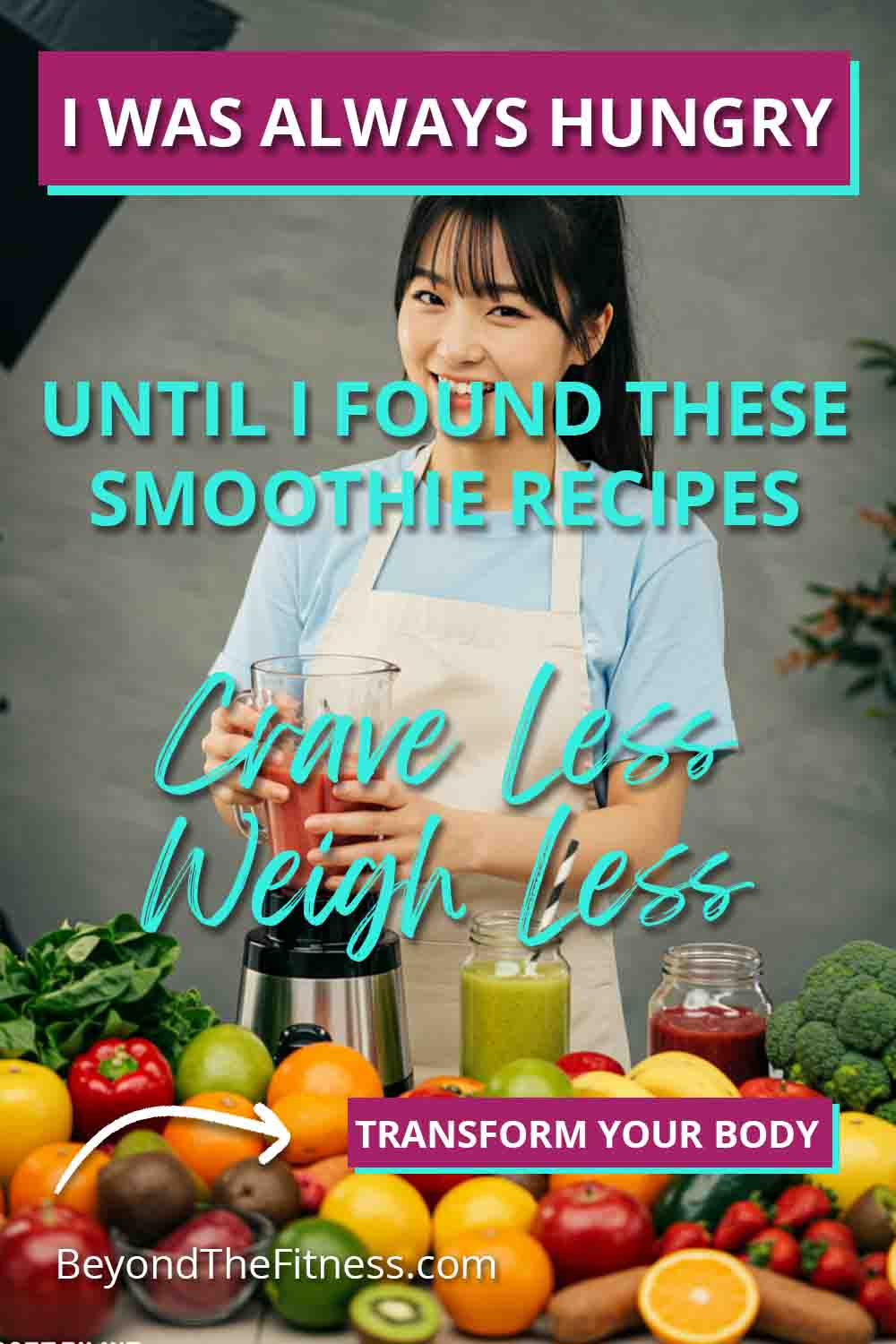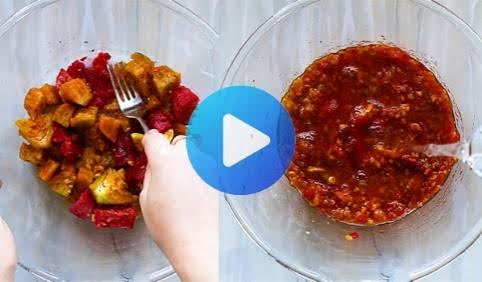Losing weight can feel like a big challenge. Many people look for ways to feel less hungry so they can eat less and lose weight. I am here to tell you about something simple and tasty that might help: smoothies. Smoothies can be a great tool if you want to manage your appetite naturally and work towards your weight loss goals.
When I talk about smoothies, I mean drinks made from blended fruits, vegetables, and other healthy things. They are not like the sugary milkshakes you might find at a fast-food place. The right kind of smoothie can help you feel full and satisfied for a long time. This can stop you from snacking on unhealthy foods between meals.
Why Smoothies Can Help You Feel Full
One of the main reasons smoothies are good for appetite control is because of what you can put in them. Let’s look at some key ingredients.
Fiber is Your Friend
Fiber is a type of carbohydrate that your body cannot digest. It passes through your system mostly unchanged. This might sound like it does not do much, but fiber is super important for feeling full. There are two main types of fiber: soluble and insoluble.
Soluble fiber dissolves in water and forms a gel-like substance in your stomach. This gel slows down digestion. When your food digests slowly, you feel full for longer. Good sources of soluble fiber for smoothies include oats, apples, pears, berries, and psyllium husk.
Insoluble fiber does not dissolve in water. It adds bulk to your stool and helps food pass more quickly through your stomach and intestines. This can also help you feel full and keep your digestive system healthy. Good sources of insoluble fiber include leafy green vegetables like spinach and kale, nuts, seeds, and the skins of many fruits.
When you make a smoothie with plenty of fiber, you are giving your body a powerful tool to fight hunger. I often tell my clients to aim for at least 5 to 10 grams of fiber in their weight loss smoothies.
Protein Power for Satiety
Protein is another key nutrient that helps you feel full. Your body uses protein to build and repair tissues, like muscles. When you eat protein, your body releases hormones that tell your brain you are satisfied. Protein also takes longer to digest than carbohydrates, so it keeps you feeling full for a longer period.
Adding protein to your smoothies is easy. You can use protein powder. There are many types, like whey protein, which comes from milk, or plant-based protein powders made from peas, soy, or rice. Greek yogurt is another great source of protein and adds a creamy texture to smoothies. Cottage cheese can also be blended in for a protein boost. For a plant-based option, silken tofu works well. Nuts and seeds, like almonds, chia seeds, and flax seeds, also provide some protein along with healthy fats and fiber.
For women trying to lose weight, getting enough protein is especially important. It helps preserve muscle mass while you are eating fewer calories. Muscle burns more calories than fat, even when you are resting, so keeping your muscle is key for long-term weight management.
Healthy Fats for Lasting Fullness
Fat often gets a bad rap, but healthy fats are essential for your body and can help with weight loss. Healthy fats, like those found in avocados, nuts, and seeds, help you feel satisfied after eating. They also slow down the absorption of nutrients, which means you stay full for longer.
Fats are also important for hormone production. Some hormones play a big role in appetite regulation. Including a small amount of healthy fat in your smoothie can make a big difference in how long it keeps hunger away.
Good sources of healthy fats for smoothies include:
- A quarter or half an avocado. This makes smoothies super creamy.
- A tablespoon of chia seeds or flax seeds. These also provide fiber.
- A tablespoon of almond butter or peanut butter. Make sure to choose natural versions without added sugar or unhealthy oils.
- A small handful of walnuts or almonds.
The Role of Volume and Hydration
Smoothies are mostly liquid. This liquid content, along with the blended ingredients, creates volume in your stomach. This physical fullness sends signals to your brain that you have eaten enough.
Staying hydrated is also important for managing hunger. Sometimes, when you think you are hungry, you might actually be thirsty. Since smoothies have a high water content, especially if you use water or ice as a base, they help you stay hydrated. This can prevent you from overeating due to mistaking thirst for hunger.
Best Ingredients for Appetite-Suppressing Smoothies
Now that you know why certain ingredients help you feel full, let’s talk about the best things to put in your weight loss smoothies.
Fruits: Choose Wisely
Fruits are a great base for smoothies because they add natural sweetness and lots of vitamins. However, some fruits are higher in sugar than others. For weight loss, it is good to focus on lower-sugar, higher-fiber fruits.
- Berries: Strawberries, blueberries, raspberries, and blackberries are excellent choices. They are packed with antioxidants and fiber, and they are relatively low in sugar.
- Apples and Pears: These fruits are good sources of pectin, a type of soluble fiber. I recommend leaving the skin on for extra fiber, just make sure to wash them well.
- Peaches and Plums: These are also good options when in season.
- Banana (in moderation): Bananas make smoothies creamy and add potassium. However, they are higher in sugar and calories than berries, so I usually suggest using only half a banana, especially if weight loss is the main goal.
- Avocado: As mentioned, avocado adds healthy fats and creaminess. It is a fruit, believe it or not.
Vegetables: Pack in the Nutrients
Adding vegetables to your smoothies is a fantastic way to boost nutrients without adding a lot of calories or sugar. You might be surprised at how well some veggies blend in.
You Might Be Interested In: Learning more about The Complete Smoothie Detox & Weight Loss Program
- Leafy Greens: Spinach is my top pick for beginners because it has a very mild flavor and you can hardly taste it in a smoothie, especially when mixed with fruit. Kale is another powerhouse, though it has a stronger flavor. Start with a small amount of kale and see how you like it.
- Cucumber: Cucumber is very hydrating and has a fresh, mild taste.
- Celery: Celery adds a bit of a salty note and is very low in calories.
- Carrots: Cooked or steamed carrots blend well and add natural sweetness and beta-carotene.
- Zucchini: Raw zucchini can be added for bulk and nutrients with a very mild flavor.
- Cauliflower (steamed and frozen): This might sound strange, but steamed and then frozen cauliflower florets can make your smoothie incredibly creamy without a strong taste.
Protein Sources: Building Blocks for Fullness
We talked about protein earlier, but here is a quick list of good protein additions:
- Protein Powders: Whey, casein, pea, soy, rice, or hemp protein. Choose unsweetened and unflavored varieties if possible, or those with natural sweeteners like stevia.
- Greek Yogurt: Plain, unsweetened Greek yogurt is best. It is much higher in protein than regular yogurt.
- Cottage Cheese: Low-fat or non-fat cottage cheese works well.
- Silken Tofu: A great plant-based option that adds creaminess.
- Nuts and Seeds: Almonds, walnuts, chia seeds, flax seeds, hemp seeds, pumpkin seeds. Remember to use them in moderation due to their calorie density.
Healthy Fat Sources: For Satiety and Flavor
A little healthy fat goes a long way.
- Avocado: About 1/4 to 1/2 an avocado.
- Nut Butters: One tablespoon of natural almond, peanut, or cashew butter.
- Seeds: One tablespoon of chia, flax, or hemp seeds.
- Coconut Oil or MCT Oil: A teaspoon can add healthy fats, but be mindful of calories.
Liquids: The Smoothie Base
The liquid you choose will affect the consistency and nutritional profile of your smoothie.
- Water: Calorie-free and hydrating.
- Unsweetened Almond Milk: Low in calories and has a mild flavor.
- Unsweetened Soy Milk: Higher in protein than almond milk.
- Unsweetened Coconut Milk (from a carton, not canned): Adds a subtle coconut flavor.
- Green Tea (chilled): Adds antioxidants.
- Coconut Water: Hydrating and provides electrolytes, but choose unsweetened versions as some can have added sugar.
Flavor and Nutrition Boosters (Optional)
These can add extra flavor or health benefits:
- Spices: Cinnamon can help regulate blood sugar. Ginger has anti-inflammatory properties. Turmeric is also a powerful anti-inflammatory.
- Extracts: Vanilla extract or almond extract can add flavor without sugar.
- Cocoa Powder (unsweetened): For a chocolatey flavor, rich in antioxidants.
- Psyllium Husk: A great source of soluble fiber for extra fullness. Start with a small amount (1 teaspoon) and drink plenty of water.
- Oats (rolled or quick): Adds soluble fiber and makes smoothies thicker.
Simple Smoothie Ideas to Get You Started
Here are a few ideas. Feel free to adjust them to your liking.
- The Green Getter Smoothie
- 1 cup spinach
- 1/2 cup unsweetened almond milk
- 1/2 cup water or ice
- 1/2 green apple, cored
- 1/4 avocado
- 1 scoop unflavored or vanilla protein powder
- 1 tablespoon chia seeds
- Why it works: Packed with fiber from spinach, apple, and chia seeds. Protein powder and avocado provide lasting satiety.
- Berry Blast Protein Smoothie
- 1 cup mixed berries (fresh or frozen)
- 1 cup plain, unsweetened Greek yogurt
- 1/2 cup water or unsweetened almond milk
- 1 tablespoon ground flax seeds
- A few ice cubes (if using fresh berries)
- Why it works: High in protein from Greek yogurt, fiber from berries and flax seeds.
- Chocolate Peanut Butter Power Smoothie
- 1/2 banana (frozen for extra creaminess)
- 1 cup unsweetened almond milk
- 1 tablespoon natural peanut butter
- 1 tablespoon unsweetened cocoa powder
- 1 scoop chocolate or vanilla protein powder
- Handful of spinach (you will not taste it)
- Why it works: Protein from powder and peanut butter, healthy fats from peanut butter, and some fiber from spinach and banana. This one feels like a treat but is still good for you.
What to Keep Out of Your Weight Loss Smoothies
Just as important as what you put in is what you leave out. Some ingredients can turn a healthy smoothie into a sugar bomb that will not help your weight loss efforts.
- Too Much Fruit: While fruit is healthy, it contains natural sugars. Using too many servings of fruit, especially high-sugar fruits like mangoes, pineapples, or too many bananas, can add a lot of calories and sugar. I suggest sticking to 1-2 servings of fruit per smoothie.
- Fruit Juices: Many store-bought fruit juices are loaded with added sugar and lack the fiber found in whole fruits. Using juice as your smoothie base can significantly increase the calorie and sugar content. Stick to water, unsweetened plant milks, or green tea.
- Added Sweeteners: Avoid adding sugar, honey, maple syrup, or agave nectar if you can. Fruits should provide enough natural sweetness. If you need a little extra, try a few drops of stevia or a date (which also adds fiber).
- Ice Cream or Sweetened Yogurts: These add a lot of sugar, unhealthy fats, and empty calories. Always opt for plain, unsweetened yogurt.
- Pre-made Smoothie Mixes: Be very careful with these. Many are high in sugar, artificial ingredients, and unhealthy fats. It is always best to make your smoothies from scratch so you know exactly what is in them.
- Canned Fruit in Syrup: This is another source of hidden sugar. Use fresh or frozen fruit. If you use canned fruit, make sure it is packed in its own juice or water, not heavy syrup, and rinse it well.
Smoothies in a Balanced Diet: Especially for Women
Smoothies can be a wonderful part of a healthy eating plan, but they are not a magic solution on their own. For sustainable weight loss and overall health, it is important to eat a balanced diet that includes plenty of whole foods.
For women, certain nutrients are especially important. Smoothies can be a great way to help meet these needs.
- Iron: Many women, especially during their childbearing years, need more iron. Spinach is a good plant-based source of iron. Adding vitamin C-rich fruits like berries to your spinach smoothie can help your body absorb the iron better.
- Calcium: Calcium is crucial for bone health, particularly as women age. If you use dairy like Greek yogurt or milk in your smoothies, you will get calcium. If you prefer plant-based options, many unsweetened plant milks (like almond or soy) are fortified with calcium. Tofu and leafy greens like kale also contain calcium.
- Folic Acid (Folate): Important for all women, especially those who might become pregnant. Leafy greens like spinach are good sources of folate. Avocado and oranges also contain folate.
Hormonal balance is another key aspect of women’s health, and diet plays a role. Some smoothie ingredients may offer support. For example, flax seeds contain lignans, which are plant compounds that can have a mild estrogen-like effect and may help with hormonal balance in some women. Healthy fats from avocado and nuts are also important for hormone production.
Remember, a smoothie can replace a meal or a snack, but it should not be the only thing you eat. Aim for variety in your diet with plenty of vegetables, fruits, lean proteins, and whole grains.
When to Have Your Smoothie for Best Results
The timing of your smoothie can depend on your lifestyle and goals.
- Breakfast: A smoothie can be a quick and easy breakfast, especially if you are short on time in the morning. A well-balanced smoothie can keep you full until lunchtime.
- Lunch Replacement: If you struggle to find healthy lunch options, a smoothie can be a good choice.
- Pre-Workout Snack: A smaller smoothie with some carbohydrates (from fruit) and a little protein about an hour before exercise can provide energy.
- Post-Workout Recovery: After a workout, a smoothie with protein and carbohydrates can help refuel your muscles and aid recovery.
- To Curb Midday Cravings: If you often feel hungry between meals, a smoothie can be a healthier alternative to processed snacks. The fiber and protein will help tide you over.
Listen to your body. If a smoothie keeps you full for 3-4 hours, it is probably working well as a meal replacement. If you are hungry an hour later, you might need to adjust the ingredients to include more protein, fiber, or healthy fats.
Exercise: The Perfect Partner for Your Smoothie Habit
While smoothies can help with appetite control and calorie reduction, exercise is a vital part of any weight loss plan. Exercise helps you burn calories, build muscle, and improve your overall health.
Combining a healthy smoothie habit with regular physical activity is a powerful strategy.
- Cardiovascular Exercise: Activities like brisk walking, jogging, cycling, swimming, or dancing help burn calories and improve heart health. Aim for at least 150 minutes of moderate-intensity cardio per week.
- Strength Training: Lifting weights, using resistance bands, or doing bodyweight exercises (like push-ups and squats) helps build and maintain muscle. As I mentioned, muscle burns more calories than fat, so more muscle means a higher metabolism. Try to include strength training at least two days a week.
Smoothies can support your active lifestyle. A pre-workout smoothie can give you the energy to power through your exercise session. A post-workout smoothie, rich in protein, can help your muscles recover and grow stronger.
Making Smoothies a Long-Term Habit
The key to success with any dietary change is consistency. Here are some tips to make smoothies a sustainable part of your routine:
- Prep Ahead: You can make smoothie packs by putting all your dry ingredients (like protein powder, seeds, oats) and frozen fruits and veggies into individual bags. In the morning, just grab a pack, add your liquid, and blend.
- Keep Your Kitchen Stocked: Have your go-to smoothie ingredients on hand. Keep your freezer stocked with frozen fruits and vegetables.
- Experiment with Flavors: Do not let yourself get bored. Try different combinations of fruits, vegetables, and spices. Look up new recipes online or create your own.
- Invest in a Decent Blender: You do not need the most expensive blender, but a good quality one will make smoother smoothies and handle frozen ingredients and tough greens better. This makes the experience more enjoyable.
- Listen to Your Body: Pay attention to how different smoothies make you feel. Do they keep you full? Do you enjoy the taste? Adjust as needed.
Are There Any Downsides to Smoothies?
While smoothies offer many benefits, there are a few things to be aware of:
- Sugar Content: As mentioned, it is easy to go overboard with sugar if you use too much fruit, fruit juice, or added sweeteners. Always be mindful of your ingredients.
- Digestive Issues: If you are not used to a lot of fiber, suddenly drinking high-fiber smoothies might cause some gas or bloating. Start with smaller amounts of fiber-rich ingredients and gradually increase them as your body adjusts. Drink plenty of water throughout the day.
- Calorie Density: Smoothies can be calorie-dense, especially if you add a lot of nuts, seeds, nut butters, or avocado. While these are healthy fats, portion control is still important for weight loss. Measure your ingredients.
- Not a Replacement for Chewing: Chewing your food is an important part of digestion and satiety. While smoothies are convenient, make sure you are also eating whole, solid foods in your diet.
- Dental Health: Sipping on sugary or acidic smoothies for long periods can be hard on your tooth enamel. It is best to drink your smoothie within a reasonable time (e.g., 20-30 minutes) and rinse your mouth with water afterward.
By being smart about your ingredients and how you incorporate smoothies into your overall diet, you can minimize these potential downsides and reap the benefits. Smoothies can be a fantastic tool for natural appetite suppression, helping you feel fuller for longer and making it easier to achieve your weight loss goals. Remember to focus on whole, unprocessed ingredients, and combine your healthy eating habits with regular exercise for the best results.
Final Thoughts
Smoothies can be a really helpful and tasty way to manage your hunger when you are trying to lose weight. By choosing the right ingredients like fiber, protein, and healthy fats, you can make drinks that keep you feeling full and satisfied. This can make it easier to eat fewer calories overall without feeling deprived. Remember that smoothies work best when they are part of a balanced diet and an active lifestyle. For women, they can also be a good way to get important nutrients. Try different recipes, listen to your body, and enjoy the journey to a healthier you.







